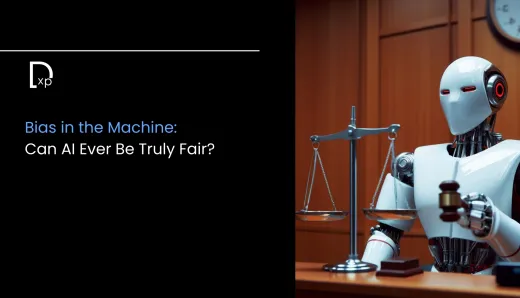Digital Empathy: Can AI Really Understand Human Emotion?

Where Emotions Meet Algorithms
There’s something deeply human about wanting to be understood.
When we speak, we hope someone is truly listening. When we share our stories, we want them to land in a place of compassion. And when we experience hard moments — grief, joy, fear, wonder — we’re not just looking for solutions. We’re looking to feel seen.
So the idea that a machine, an artificial intelligence, might one day understand our emotions? It’s as fascinating as it is unsettling.
Because even though we can now ask a chatbot for advice, have an app mirror our tone, or receive product recommendations based on our “mood,” one question remains:
Can AI truly feel with us — or is it just mimicking the performance of connection?
The Rise of Emotional AI
Emotional AI — or “affective computing” — refers to systems designed to detect and respond to human emotions. This can mean analyzing facial expressions, vocal tone, body language, and even word choice to determine what a person might be feeling.
We already see this tech woven into daily life, often without noticing.
Your car might warn you if you seem drowsy. A call center AI might detect frustration in your voice and escalate the issue to a human. Mental health apps now use conversational AI to help users “talk through” stress, sadness, or anxiety. Marketing platforms track emotional engagement to optimize content performance.
It’s convenient. Sometimes helpful. Occasionally powerful.
But is it real empathy?
What Empathy Actually Is
To understand the limits of AI, we need to first understand the beauty of empathy.
Empathy isn’t just about recognizing someone’s emotion — it’s about resonating with it. Feeling it with them. It’s about presence, nuance, vulnerability, and often, shared experience.
And that’s where things get complicated for AI.
AI can be trained to recognize patterns that signal emotion. It can detect a voice cracking or an increased heart rate. It can match those signals to labels like “sadness” or “anger” or “joy.”
But that recognition is mechanical. There’s no felt experience behind it. No inner world. No personal history to connect it to. No moral framework to interpret what should be done with the emotion it detects.
At best, it’s an advanced mirror. At worst, it’s a guessing game packaged as intimacy.
When Machines “Feel”
Let’s be clear: AI isn’t sentient. It doesn’t feel.
But what it can do — very convincingly — is simulate empathy. It can respond with the right words, say the right things, and even mimic the right tone.
For instance, AI-generated therapists are becoming more common in mental wellness apps. These bots offer affirmations, track emotional health trends, and guide users through basic mindfulness exercises.
And people report feeling helped by them.
But this raises a deeper question: Is the feeling of being understood enough, even if the understanding isn’t real?
And if we increasingly turn to systems that respond with empathy, even if it’s synthetic — does that reshape our expectations for what human empathy should look like?
The Double-Edged Sword
There’s incredible potential in emotional AI.
Imagine healthcare systems that detect emotional distress early. Or AI tutors that adjust their teaching style based on student frustration. Or digital assistants that can offer comfort, not just information, when you’re having a hard day.
Technology that understands emotion could empower more responsive, humane experiences — if it’s used with care.
But there's a flip side.
Emotional data is deeply personal. And once we open the door to machines reading our inner state, we risk turning feelings into data points, and compassion into product strategy.
When emotion becomes just another metric to optimize, we risk commodifying our most sacred human experiences.
There’s also the concern that as AI becomes more emotionally “intelligent,” it could be used to manipulate — not support. Imagine AI that detects vulnerability and exploits it to drive purchases or political behavior.
We have to ask: Who benefits when machines learn how we feel?
Empathy as a Human Practice
The truth is, even if AI could someday understand emotion on a deeper level, that doesn’t mean it should replace human connection.
Empathy isn’t a product. It’s a relationship.
It's built in slow, sacred moments — in the pauses between words, in the eye contact that says “I’m with you,” in the shared silence after something hard is said.
AI can support human empathy. It can create space for it. It can remind us of it. But it can’t replace the feeling of being held emotionally by another person.
In fact, the more we automate empathy, the more we need to intentionally practice it with each other.
Because a world where machines respond with kindness is lovely — but a world where humans still choose to do so? That’s powerful.
Where We Go From Here
So, can AI understand human emotion?
Technically, it can recognize it. It can react to it. It can even predict it. But true understanding — the kind that changes both the speaker and the listener — still belongs to humans.
And maybe that’s exactly where the opportunity lies.
Instead of asking whether AI can feel like us, what if we asked how it could remind us to feel more deeply? To notice. To care. To show up.
Technology is always going to evolve. But empathy? That’s ancient. And timeless. And needed now more than ever.
If we use AI to scale our capacity to listen, to reflect, to connect — amazing things could happen.
But let’s not confuse performance with presence. Let’s not hand off our humanity in the name of efficiency.
Because when it comes to feeling deeply, responding authentically, and being truly present — we are still the best technology there is.




